Cyclify India is reader-supported! We may receive an associate commission if you make a purchase through one of the Amazon Associate links on this page! Continue Reading…
Our bodies are greatly impacted by cycling. It helps us stay active and healthy. Not only does it aids in burning calories, but it also increase overall cardiovascular health.
This method of getting exercise is quite efficient. On the other hand, you will need to join a gym if you want to improve your body and get large thighs and muscles. This kind of physical fitness is obtained by thorough training there.
Seeing bikers on the right track is harder than we may imagine. It’s not simply cycling that makes up their physique. Large quad and terrific thigh muscles require rigorous training in the gym; riding alone won’t produce them, according to bicycling.com.
The consequences of cycling vary from person to person and even more so between men and women, which is something that should be kept in mind. Consequently, the effect of cycling on body shape begin with your own body type.
To make things clearer for you, we’ll examine how effect of cycling on body shape and how it affects it, in more depth.
Table of Contents
What Muscle Does Cycling Tone?

Cycling allows us to feel and see how our legs function. Therefore, cycling primarily affects the lower body, with the muscles of the lower body being the only ones engaged and impacted. The pedals are turned, and when they do, a wheel or a fixed flywheel rotates. Thus, Legs, glutes, hamstrings, and quadriceps are worked out during cycling.
However, some of you may be wondering how cycling a bike affects our body’s shapes. Now let’s take a closer look at the most toned and focused muscle areas.
- Calf muscles: These are the first muscles to move. It is evident that using our legs to paddle concentrates on and develops our calves. (The gastrocnemius and soleus muscles of the calf)
- Thigh muscles: During pedaling, our legs are raised and lowered, causing our thighs to move. This action targets the thigh muscles. (The quadriceps and hamstrings are thigh muscles.)
- Buttock muscles: The buttock area contains muscles that collaborate with the hips to move the thighs, Which enable us to paddle with our feet.
- Foot: Surely, that one is the most obvious? Our feet bear the brunt of the pressure that travels from our hips, thighs, and calves. And doing so facilitates the cycle’s onward motion by allowing us to spin the pedals. Although the lower body is where the effects are most obvious, upper body muscles are also strengthened through this process. Let’s examine a few.
- Arms: Our support system when adjusting a bicycle’s handlebars. Yes, it does play a part in our balance; the stronger our arm, the more stable we are. Triceps and biceps in the arms
- Shoulders: The arm is related to the shoulder because it aids in balance maintenance. Therefore, the shoulder muscles are also exercised throughout this procedure. (Deltoids – Shoulders)
Depending on the conditions, different sets of muscles will be used when cycling outside. Riding a stationary bike has several advantages, one of which is the ability to adjust resistance for a consistent and effective exercise. The workout is easier but less effective if you ride outside on a perfectly level surface or use very little resistance indoors.
If possible, try climbing a hill outside or allow your teacher to increase the resistance.
In order to achieve the goal of building stronger legs, you need to include weight training to your riding regimen. For stronger calves and quads and to gain more power as you bike, try squats, deadlifts, lunges, and leg presses.
15 Effect of Cycling on Body Shape

Normal cycling, whether done inside or out, has an immense number of chnages on our bodies. Although our bodies do not drastically change, there are some noticeable differences. This allows us to examine the various effects of many factors that affect our body shape during cycling.
1. It strengthens the muscles in the lower body
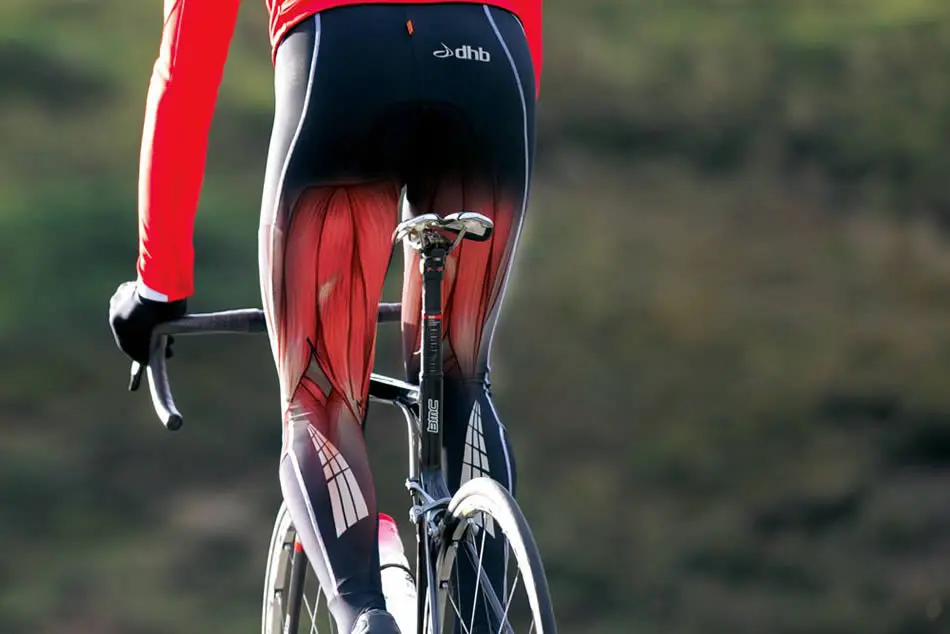
Cycling exercises the lower body’s thighs, calves, and buttocks. It strengthens the muscles. Their forms are also enhanced, and the muscles gain strength from it.
Because the muscles in the foot, calves, thighs, and buttocks are all connected, this promotes greater muscular function. It makes it easier for them to keep in touch.
This type of resistance exercise increases your total muscular endurance in addition to strengthening and activating your hips, hamstrings, and glutes.
As a result of the precisely formed muscles, the body becomes considerably more toned.
2. Improves the strength and form of the legs

We use our feet to pedal while we cycle. From the thighs, pressure is applied to the calves, which in turn apply pressure to the foot. It contributes to strengthening our foot’s grip on the paddle and refining its form.
Additionally, as we continue to cycle, our legs get stronger and more toned. They don’t appear very defined as a result. It would result from rigorous gym training. However, it would benefit us as our shape would be better than before.
Aspiring road riders who seek strength and raw power can do so by lifting large weights. They can also ride uphill for longer periods of time to build stronger legs.
Although cycling does strengthen your leg muscles, not all riders get the same benefits. Cyclers differ from one another in terms of leg length and muscular tone.
The varying degrees of cycling are one of the main causes of this. Professional cyclists tend to have longer, more slender legs, depending on their training level. Conversely, track cyclists have legs that are stacked.
3. Burns the calories
It is a really efficient technique for us to burn calories. A moderate cycling pace of 12 to 13.9 miles per hour can burn 298 calories in 30 minutes, according to Harvard University.
Riding a bike up a higher hill generally burns more calories since it requires more effort and energy to deviate from a planned course and try something new.
4. Your arms get toned.

In order to keep the cycle moving smoothly, we must keep the handles straight, and maintaining balance requires strength. It adds tone and helps us build stronger arms and muscles.
As we keep riding, it takes on a nicer appearance and gains more form. The majority of the body portion that men focus on is their arms.
Thus, when we start riding, there is a significant difference from earlier when we weren’t physically active at all.
The ideal places to work out your arms are those with hills since you can feel twice as much force there as you would on flatter terrain.
When riding, your upper body aids with balance and posture maintenance. The key to road riding is to hold a fixed posture for extended periods of time; this promotes muscular tone and upper body strengthening.
When you can maintain your position for further than before and when you go beyond your prior cycling time limit, you will know that you have developed resistance to arm discomfort.
5. It aids in weight loss without the need for strict diets
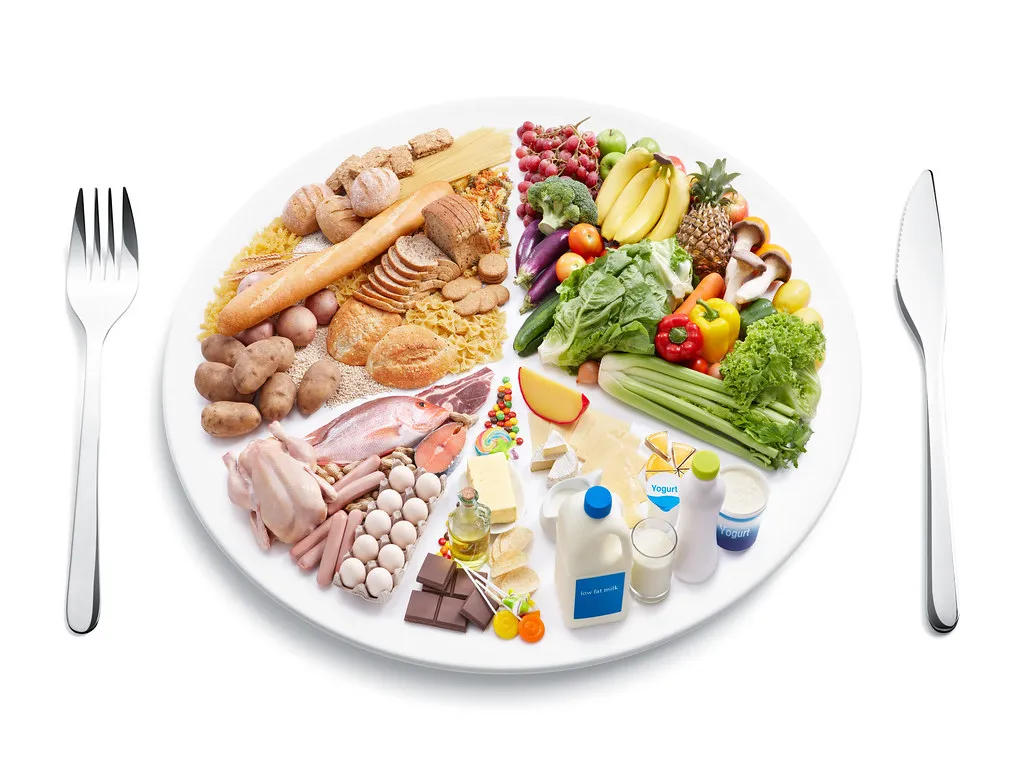
One of the most effective methods to burn fat and loose weight all over your body is through cycling. You may be wondering why professional cyclists are so slender. Sure,
Depending on the level of intensity you ride at, Riding a bike only for an hour may burn up to 1000 calories. As a result, we’re able to trim our waistlines.
Our upper and lower bodies are under strain while we ride uphill, which makes us use more energy than we would otherwise. Because more energy is needed during this process, we are able to take in more oxygen and lose weight.
Those who converted from driving to cycling dropped 7 kg on average over the course of a year when they rode for just 30 minutes every day, according to a research. For this reason, we believe that cycling is an incredibly powerful weight-loss strategy.
Related: What to eat before a bike ride for weight loss?
6. Its effect on joints is minimal.
Our joints are not as affected as they would be after rigorous workout. Our joints are not under a great deal of pressure from it.
With time, the joints improve and become more flexible, making things more relaxed. As we age, the fluid in our joints continues to function, greatly improving the quality of our lives.
7. Flat Belly
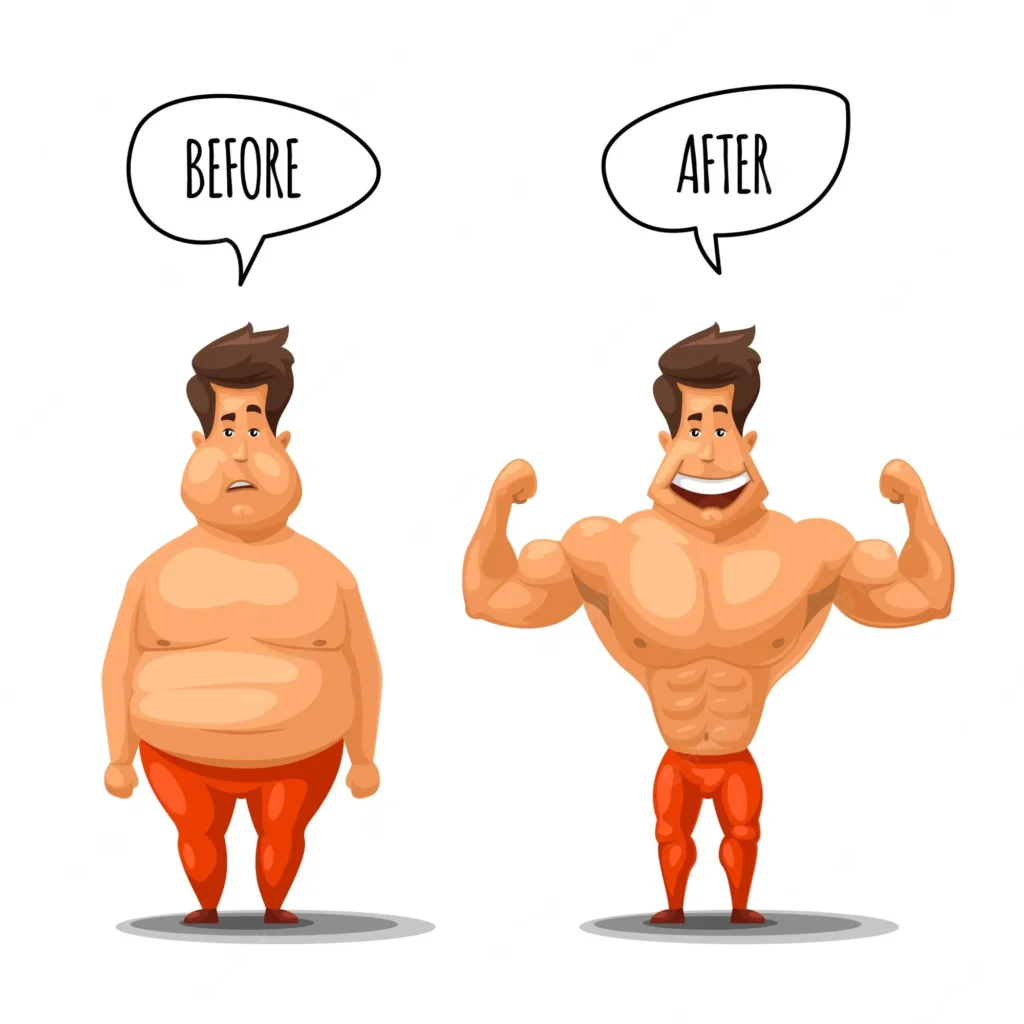
If you’re wondering if cycling helps you burn belly fat, the answer is definitely yes. Riding a bicycle burns fat because it is an aerobic exercise, even if your stomach muscles aren’t working as hard as your leg muscles are.
Take note that low-intensity riding burns fat at a greater rate than high-intensity cycling. Maintain a balanced pace of work to ensure that conversions appear neither too hard nor too easy.
Boost the calorie burn by including interval training. Choose cross-training to help your body cycle for longer lengths of time, which will allow you to exercise more, burn more calories, and lose weight overall, including belly fat.
Cycling helps you attain a flat tummy by strengthening your abdominal muscles. Your abs work rather hard to help keep your body balanced & centered on the bike while you pull, climb, descend, and pull some more.
Your core may get more toned and a slimer belly as a result of this natural involvement during your activity.
8. Intelligence
Physical activity has been linked to improved brain health and a lower risk of the cognitive decline that can lead to dementia in later life.
Cycling has an impact on more than just the physical body. To prepare your body to work twice as hard to get into shape, you need to have more mental capacity.
A healthy and powerful physique is the outcome of cycling since it causes the brain to increase blood flow to all parts of the body.
Research has indicated that following a cycle, there is a 40% increase in blood flow in specific body parts. At your own pace, gradually increase the speed, and incorporate cycling into your routine for 55–60 minutes each day.
9. Thighs get the necessary strength
To become better cyclists, we need to have powerful thighs. Strong thighs would be necessary for riding at a quicker and more strenuous pace. And you may also do that by gradually raising it while riding on a daily basis.
As a result, the thighs get the necessary strength and their form is improved.
10. Strengthens the Heart
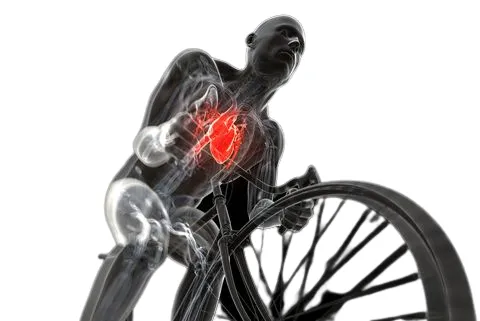
Cycling increases heart rate and fortifies cardiac muscle. You also have a lower chance of having high blood pressure, heart attacks, stroke, and other cardiovascular disorders.
Furthermore, there might be a general improvement in cardiovascular function as compared to lifestyles without exercise and those who engage in physical activities like cycling and jogging.
11. The Resistance Factor
Because of the resistance component, cycling not only burns fat but also tones muscle.
Cycling is primarily focused on strengthening and conditioning the muscles surrounding the quadriceps, hamstrings, glutes, and calves, but it also has an impact on the upper body.
12. Low Impact
Your joints won’t be stressed out throughout this exercise. Regardless of how long it has been since you rode a bike, riding is a low-skilled workout.
When it comes to injuries, running is more common than cycling. Muscle injury affects runners more than cyclists, with rates of inflammation and DOMS being as high as 133–144%.
Even if cycling doesn’t significantly enhance bone density as other activities do, you can still obtain decent benefits by including some training into your regimen. For those with lower body joint issues and general stiffness, it’s an excellent workout.
13. Core Exercise
A great cardio and core exercise is cycling. The likelihood is that you will burn 400 calories in an hour.
Cycling may be a great way for you to lose weight if you’re overweight because it doesn’t need you to bear any weight.
Cycling strengthens the back and abdominal muscles. It keeps the body upright and needs a lot of core power to maintain the cycle in the proper posture.
Having a strong back and abdomen helps to stabilize the spine, improve comfort, and promote stability during riding.
14. Cycling’s Health Benefits
Regular aerobic exercise lowers the risk of heart disease, stroke, high blood pressure, dementia, type 2 diabetes, and various cancers, according to the American Heart Association (AHA).
Additionally, it could promote better thinking and restful sleep. When compared to those who exercise infrequently or never, people who exercise regularly report reduced symptoms of anxiety and sadness and an overall higher quality of life.
Additionally, cycling has been linked to a decreased risk of type 2 diabetes, heart disease, and obesity.
The AHA recommends medium-intense aerobic exercise for at least 150 minutes each week. Cycling can improve your cardiovascular endurance overall when done on a regular basis.
Related: Cycling everyday for an Hour: What to Expect?
15. Using a recumbent bike indoors
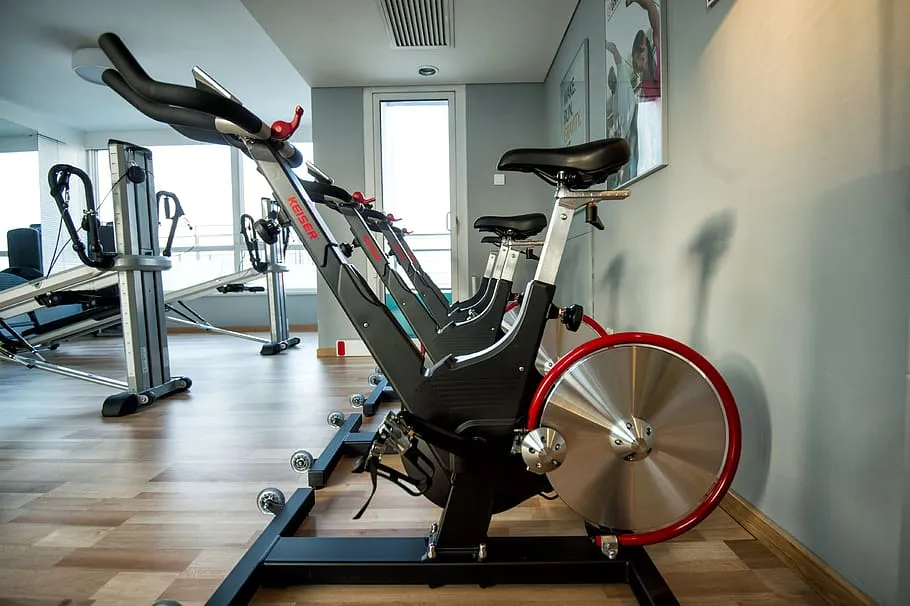
Among the most cozy indoor cycling options for body toning is recumbent riding. This style of cycling is regarded as a rigorous core exercise, one that targets the body’s major muscle groups.
The main muscle groups used during a recumbent bike workout include your quadriceps, shins, calf muscles, hamstrings, glutes, and a lot more.
A firm, strong, athletic body as well as improved general health are the results of this conformable method of toning various muscle groups.
Without leaving the house, you may take advantage of everything that outdoor riding has to offer.
One tiny study found that adding riding to a woman’s regimen increased her functional skills, body form, and muscular strength in healthy older women.
Effect of cycling on the body shape of a female
A common concern among women is gaining bulky muscles from exercise. Would wish it were that simple. Since women have more body fat and 20% less testosterone than males, it takes far more effort for them to observe improvements in their body form.
Due to hormonal restrictions, a female’s physique changes far more slowly than a male’s. To achieve the same results in the same amount of time as men, women require substantially more intense cycling.
A key component in the development of muscle is testosterone. Men have an advantage when it comes to developing muscle definition since women are not as fortunate in having more testosterone as men. An English research from the same era indicated that women needed twice as long as males to lose weight, according to the Sport Coaching website.
All it take is as little as 12 to 16 weeks, for men’s body parts to develop visible transformation through cycling. Along with their lower body parts, their triceps also begin to get more defined.
However, you may be wondering what is the effects of cycling on body shape female.
Since women tend to have higher body fat percentages than men, we might expect some changes if a woman cycles four days a week for more than sixty minutes, since males need to follow the same schedule.
It has a long-lasting positive transformation on the body. Their stomachs get flattened, and women can also achieve smaller waists just by increasing their own workout by a little amount of time & exercise.
With strength training integrated in their daily workout regimen, female athletes and elite track & racing cyclists develop more noticeable leg muscles. This is the outcome of intense training over several months; it does not happen by chance. Women who are concerned that riding would make them “bulky” should relax; it won’t make them become bodybuilders, but it will help them feel stronger and more fit. Nonetheless, it is advised to incorporate strength training into an exercise regimen.
Depending on their calorie intake, level of exertion, and amount of time spent on the bike, recreational riders & women enrolled in indoor cycling programs may see a change in their body shape.
Moreover, there is a lower risk of injury and cycling is one really beneficial exercise. Which makes them better.
Keeping the changes in body type aside, cycling is also an excellent means of enhancing cardiovascular fitness; thus, it’s crucial to recognize the overall fitness is in itself a bigger reward.
Cycling Legs Before And After of a Female
Before we begin cycling, our bodies looks the same as those of most other people on this earth. To better oneself & improve our health, we begin engaging in any kind of physical exercise. What impact, therefore, does cycling have on the legs of females before and after?
Before you began cycling, it would still be heavy and fatty. Accepting who we are is actually quite wonderful, but not in terms of health.
After regular riding or indoor cycling, our legs take on a lot more defined and attractive shape. We’ll stay in shape thanks to it.
Calf muscles are strengthened and the legs look great in skinny jeans. In addition to the thighs becoming stronger, general health and appearance are greatly improved.
Effect of Cycling on Physical and Mental Health

Cycling benefits your body in far more ways than only burning fat and gaining muscle, as you can probably assume. Your body goes through a number of chemical changes while you exercise, which affect how you feel, look, and function.
There are several remarkable impacts that cycling has on both your physical and emotional health, as seen in the table below. In case you’re interested in learning more, I’ve created an extensive guide about cycling’s health advantages here.
I bet that not many cyclists are aware of half of the amazing health benefits of cycling i have included in this little blog.
| Health Benefits | Benefits Explained |
|---|---|
| Improves Overall Mood | A “cycling high” is the term used to describe the dopamine and serotonin releases that occur in your brain after a bike ride. These neurochemicals have anti-painting and mood-enhancing properties. [3] |
| Improves Brain Health | There is a clear correlation between physical exercise and higher brain serum concentrations of endocannabinoids, according to recent research. Numerous neurological advantages, including enhanced neuroplasticity and memory, are brought about by endocannabinoids. [4] |
| Good for Injury Rehabilitation | According to recent research conducted in Korea, cycling is a very effective treatment for complete musculoskeletal recovery. Put another way, riding a bike can aid in the healing process if you have sustained bodily ailments. [5] |
| Improves Cardiovascular Health | Research indicates that cycling can lead to gains in cardiovascular fitness, persistent improvements in cardiorespiratory fitness in young people, and some reductions in cardiovascular risk factors in working-age individuals. [6] |
What Physical Changes Occur After Cycling?
It provides us with the entire body workout we need to maintain our physical fitness, starting with the shoulders, arms, lower back, stomach, buttocks, thighs, calves, and feet.
We burn a lot of calories, reduce weight, and look good with our body parts toned more effectively than before.
Apart from the fact that it will improve our general health in the best possible ways, cycling helps us define the features of our bodies, which otherwise would have appeared the same as anybody else’s.
FAQ On Pre- and Post-Cycling Body Transformation
1. What is the effect of indoor cycling on body shape?
An efficient and successful technique to burn fat and calories is indoor cycling. Being an aerobic workout, it strengthens your muscles, heart, and lungs.
Riding a bicycle has several health advantages for body types, including reduced blood pressure, improved sleep, more vitality, and a robust immune system. It also helps to improve blood flow in the body.
Q2. Which body parts are affected by cycling?
Riding a bike primarily affects three core bodily parts: the upper body, lower body, and core/back. Muscles in the thighs and calves are part of the lower body. Arms and shoulders are considered to be part of the upper body. The core body component includes the back and abdomen.
Q3. Is it possible to reduce the size of your thighs by cycling?
Yes, compared to running or jogging, cycling is a low-resistance workout that puts less strain on joints. Endurance cycling might help you shrink the size of your thighs if you have extra fat on them.
Q4. Does cycling tone arms?
Depending on the kind of riding you do, perhaps. When riding a road bike, for instance, the rider must frequently sag forward in the seat over the handlebars; maintaining this position can assist build arm strength. In addition, maintaining a firm posture when riding outdoors requires balance, which may be strengthened by utilizing the arms.
You could discover that the definition is now simpler to detect whether you’re getting slimmer via riding.
Q5. Is indoor cycling good for weight loss?
If an individual cycles inside and maintains a calorie deficit—that is, consumes less calories than burns—this can be an excellent weight-loss strategy.
Insider reports that depending on intensity, an average indoor cycling class burns between 350 and 600+ calories. Your present level of fitness, the kind of class you’re attending, and the amount of resistance you’re utilizing might all play a role in this. Consumption of calories during the day is another factor that influences it.
Q6. Is cycling an effective way to lose belly fat?
Although cycling is a great way to burn calories, it’s crucial to understand that fat cannot be reduced over the spot. Riding a bicycle does not specifically target fat on the stomach, hips, legs, or chin. Take care that you’re not overeating and that you’re getting enough exercise if you want to lose belly fat.
As for boosting metabolism—which is essential for burning calories and losing weight over.
Conclusion: How Cycling Affects Both Male and Female Body Shape
You now know the information about how riding affects body shape that was previously discussed. Other than the fact that you should be mindful of certain medical issues, it is fine.
Cycling is the most efficient technique to gain height, reduce weight, or improve the quality of your health. Also, it gives us strength, self-assurance, and a better sense of who we are.
I sincerely hope that was instructive. Tell me if you succeeded. Enjoy your bike adventure.
Joyful Canoeing!


0 Comments